It looks like you're using an Ad Blocker.
Please white-list or disable AboveTopSecret.com in your ad-blocking tool.
Thank you.
Some features of ATS will be disabled while you continue to use an ad-blocker.
5
share:
[color=Grey]This thread is just as much for my own refference as it is open for you'r input's. I made it because I often see people mention the Gulf
of Tonkin incidents, without knowing what transpired.
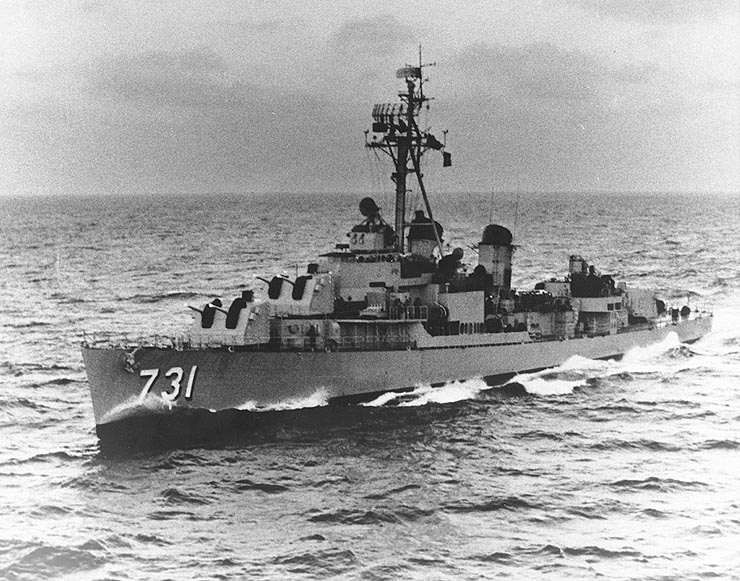
The USS Maddox was a destroyer during the Vietnam war, that was attacked 2 times within a few days by the north Vietnamese navy….or so it was initially claimed. This led to the “Tonkin resolution” which gave US government authorization to what eventually became a full-scale war in Southeast Asia.
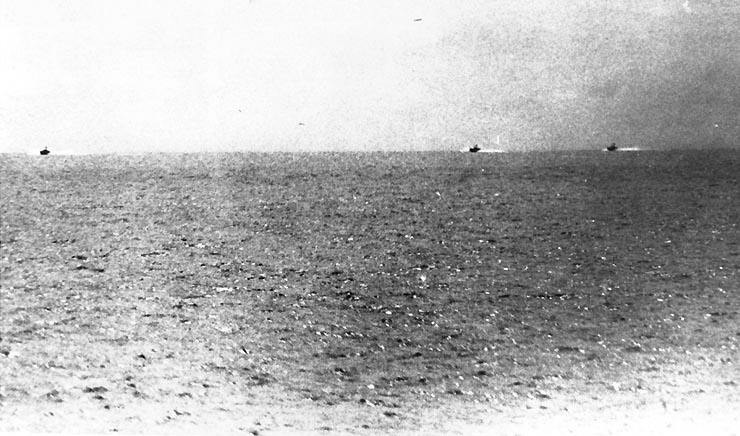
On the 2nd of August 1964, the USS Maddox was in the Tonkin Gulf trying to intercept enemy intelligence.
Schematics of the first incident:
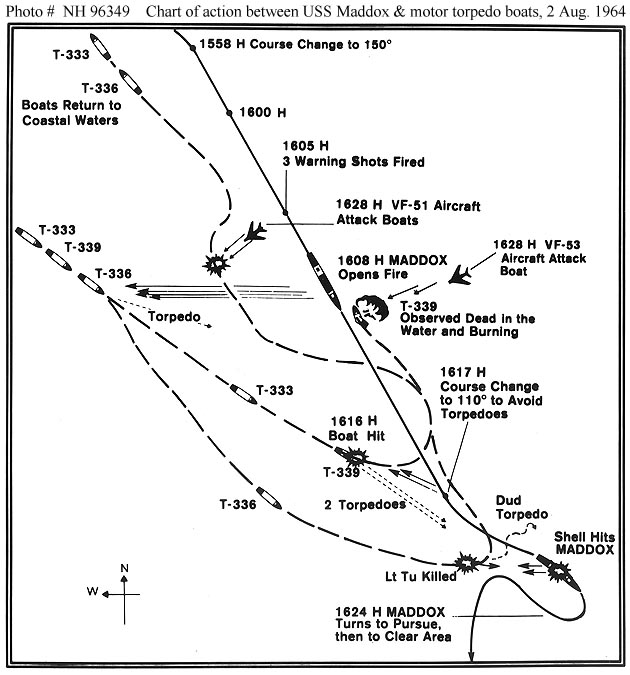
Apparently there is no hokus pokus about the incident on the 2nd of August, so let’s skip the details and jump to 4 August 1964 and the 2nd incident for USS Maddox in the gulf of Tonkin. The first was an unexpected attack but one incident without US casualties was not enough to start full-scale war.
There is no pictures available to prove the attack on the 4th of August, we will return to this incident after we looked at the implications of the attacks, but Later that same day the US began its first bombing raid on North Vietnam, escalating the already tense mood between the South Vietnamese and the Vietcong, the South Vietnamese communists. This was a major turning point which allowed the US to begin to assist the South Vietnamese.
Schematics of the second incident:
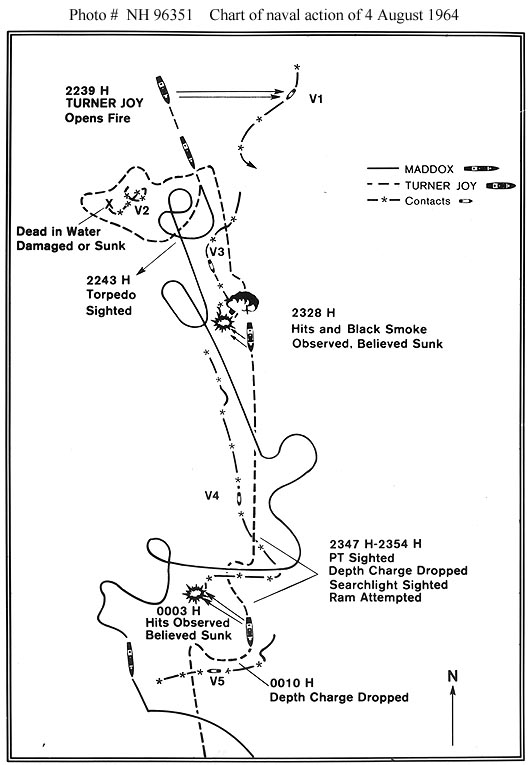
A few days later, the U.S. Congess passed the Tonkin Gulf Resolution, which gave the Government authorization for what eventually became a full-scale war in Southeast Asia. USS Maddox (DD-731), 1944-1972
Actions in the Gulf of Tonkin, August 1964
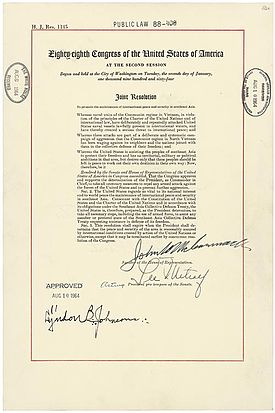
The United States began to assist the South Vietnamese on the eighth of March, 1965, when the US government decided the South Vietnam Army could defeat the Vietcong. By the end of that year the US Military sent more than 200,000 American troops to South Vietnam, a number which by 1967 reached about 540,000 Americans. The Vietnam war cost between 1,4 and 4 million Vietnamese lives. 58220 american soldiers was killed and an additional 150.000 was injured. U.S. military involvement in Vietnam ended on 15 August 1973.

Gulf of Tonkin incident
The USS Maddox was a destroyer during the Vietnam war, that was attacked 2 times within a few days by the north Vietnamese navy….or so it was initially claimed. This led to the “Tonkin resolution” which gave US government authorization to what eventually became a full-scale war in Southeast Asia.
The day before the first incident, Hanoi had protested the attacks on its territory by Laotian aircraft and South Vietnamese gunboats.
What's more, "It was generally known...that `covert' operations against North Vietnam, carried out by South Vietnamese forces with U.S. support and direction, had been going on for some time." 30-year Anniversary: Tonkin Gulf Lie Launched Vietnam War
What happened in the gulf of Tonkin on the 2nd and 4th of August 1964?

On the 2nd of August 1964, the USS Maddox was in the Tonkin Gulf trying to intercept enemy intelligence.
On the afternoon of 2 August 1964, while steaming well offshore in international waters, Maddox was attacked by three North Vietnamese motor torpedo boats. The destroyer maneuvered to avoid torpedoes and used her guns against her fast-moving opponents, hitting them all. In turn, she was struck in the after gun director by a single 14.5-millimeter machine gun bullet. Maddox called for air support from the carrier Ticonderoga, those planes strafed the three boats, leaving one dead in the water and burning. Both sides then separated. USS Maddox (DD-731), 1944-1972
Actions in the Gulf of Tonkin, August 1964
Schematics of the first incident:

Apparently there is no hokus pokus about the incident on the 2nd of August, so let’s skip the details and jump to 4 August 1964 and the 2nd incident for USS Maddox in the gulf of Tonkin. The first was an unexpected attack but one incident without US casualties was not enough to start full-scale war.
The second attack
During the night of 4 August, while they were underway in the middle of the Tonkin Gulf, Maddox and Turner Joy detected speedy craft closing in. For some two hours the ships fired on radar targets and maneuvered vigorously amid electronic and visual reports of torpedoes. USS Maddox (DD-731), 1944-1972
Actions in the Gulf of Tonkin, August 1964
There is no pictures available to prove the attack on the 4th of August, we will return to this incident after we looked at the implications of the attacks, but Later that same day the US began its first bombing raid on North Vietnam, escalating the already tense mood between the South Vietnamese and the Vietcong, the South Vietnamese communists. This was a major turning point which allowed the US to begin to assist the South Vietnamese.
Schematics of the second incident:

Prior to the U.S. air strikes, top officials in Washington had reason to doubt that any Aug. 4 attack by North Vietnam had occurred. Cables from the U.S. task force commander in the Tonkin Gulf, Captain John J. Herrick, referred to "freak weather effects," "almost total darkness" and an "overeager sonarman" who "was hearing ship's own propeller beat." 30-year Anniversary: Tonkin Gulf Lie Launched Vietnam War
What happened after the 2 incidents in the Gulf of Tonkin?
Within thirty minutes of the 4 August incident, President Johnson had decided on retaliatory attacks. That same day he used the 'hot line' to Moscow, and assured the Soviets he had no intent in opening a broader war in Vietnam. Early on the 5 August Johnson publicly ordered retaliatory measures stating, "The determination of all Americans to carry out our full commitment to the people and to the government of South Vietnam will be redoubled by this outrage." One hour and forty minutes after his speech, US aircraft reached North Vietnamese targets. On the 5 August at 10:40am these planes flying from US aircraft carriers, bombed four torpedo boat bases, and an oil-storage facility in Vinh. (The World Today, Vol. 26, No. 5 (May, 1970), pp. 209-217, Adam Roberts )
A few days later, the U.S. Congess passed the Tonkin Gulf Resolution, which gave the Government authorization for what eventually became a full-scale war in Southeast Asia. USS Maddox (DD-731), 1944-1972
Actions in the Gulf of Tonkin, August 1964

The United States began to assist the South Vietnamese on the eighth of March, 1965, when the US government decided the South Vietnam Army could defeat the Vietcong. By the end of that year the US Military sent more than 200,000 American troops to South Vietnam, a number which by 1967 reached about 540,000 Americans. The Vietnam war cost between 1,4 and 4 million Vietnamese lives. 58220 american soldiers was killed and an additional 150.000 was injured. U.S. military involvement in Vietnam ended on 15 August 1973.
edit on 10-1-2013 by Mimir because: (no reason given)
The False Flag
Though information obtained well after the fact indicates that there was actually no North Vietnamese attack that night, U.S. authorities were convinced at the time that one had taken place, and reacted by sending planes from the carriers Ticonderogaand Constellation to hit North Vietnamese torpedo boat bases and fuel facilites. USS Maddox (DD-731), 1944-1972
Actions in the Gulf of Tonkin, August 1964
In 2005, an internal National Security Agency historical study was declassified; it concluded that the Maddox had engaged the North Vietnamese Navy on August 2, but that there were no North Vietnamese Naval vessels present during the incident of August 4. The report stated regarding August 4:
“It is not simply that there is a different story as to what happened; it is that no attack happened that night. [...] In truth, Hanoi's navy was engaged in nothing that night but the salvage of two of the boats damaged on August 2” ( "Skunks, Bogies, Silent Hounds, and the Flying Fish: The Gulf of Tonkin Mystery, 2-4 August 1964" , Hanyok article (page 177) )
The NSA now attempts to spin the second incident as honest intelligence errors to excuse the actions that came out of this “intelligence”, but….
Prior to the U.S. air strikes, top officials in Washington had reason to doubt that any Aug. 4 attack by North Vietnam had occurred. Cables from the U.S. task force commander in the Tonkin Gulf, Captain John J. Herrick, referred to "freak weather effects," "almost total darkness" and an "overeager sonarman" who "was hearing ship's own propeller beat."
One of the Navy pilots flying overhead that night was squadron commander James Stockdale, who gained fame later as a POW and then Ross Perot's vice presidential candidate. "I had the best seat in the house to watch that event," recalled Stockdale a few years ago, "and our destroyers were just shooting at phantom targets — there were no PT boats there.... There was nothing there but black water and American fire power."
In 1965, President Johnson commented privately: "For all I know, our Navy was shooting at whales out there." 30-year Anniversary: Tonkin Gulf Lie Launched Vietnam War
….This is an example on how bad government intelligence or a constructed lie can lead to mass murder…this is what’s called a false flag. The false flag is created when the claims about none existing Vietnamese attack occurs, they named an unseen attacker to press their agenda through.
For more information on the inconsistencies on the 4 August attacks, various sources recommend the book “The unsencored war”
Wiki
edit on 10-1-2013 by Mimir because: (no reason given)
The second fabulous and very informative thread that has been posted today to this section,S&F my friend. this has been a subject which I have always
been interested in learning more about but have not due to recent events and my research into them.
This was very informative and a good starting point thank you very much for posting
That is all
Trowa
This was very informative and a good starting point thank you very much for posting
That is all
Trowa
edit on 10/1/13 by TrowaBarton because: sentence structure was deplorable
reply to post by TrowaBarton
Your welcome and thankyou for the honors
A little videodocumentation for those who like such.
Gulf of Tonkin Controversy from 60 Minutes -- LBJ, Fulbright, Morse
Presentation by Alex Jones
"Uncle" Ron Paul warn's about Gulf of Tonkin-like incidence could start a war with Iran.
Your welcome and thankyou for the honors
A little videodocumentation for those who like such.
Gulf of Tonkin Controversy from 60 Minutes -- LBJ, Fulbright, Morse
Presentation by Alex Jones
"Uncle" Ron Paul warn's about Gulf of Tonkin-like incidence could start a war with Iran.
reply to post by Mimir
Thanks a lot for posting this summary!
The way I see it, there is a possibility of a genuine error that caused a lot of lives. Maybe Johnson was actually convinced their were enemy boats that night.
On the other hand, why didn´t the pilot who had the best seat in the house clear it all up immediately? That is something that irritates me a little.
Anyway, I could understand that tensions where high on board after the real attack two days before. And I can imagine that some people where so on edge that they maybe chased some phantom targets.
But then again, they have very sophisticated radar systems on battleships even back then. Why didn´t they realize after a while that they were firing at nothing. How could the information "we were attacked" survive so long for the president to make a decision about it?
A little weird indeed. But the real reasons for wars are not always for the public to know I guess.
I do not see a conspiracy on every corner, more to the contrary, but there are some weird things about this.
Thanks a lot for posting this summary!
The way I see it, there is a possibility of a genuine error that caused a lot of lives. Maybe Johnson was actually convinced their were enemy boats that night.
On the other hand, why didn´t the pilot who had the best seat in the house clear it all up immediately? That is something that irritates me a little.
Anyway, I could understand that tensions where high on board after the real attack two days before. And I can imagine that some people where so on edge that they maybe chased some phantom targets.
But then again, they have very sophisticated radar systems on battleships even back then. Why didn´t they realize after a while that they were firing at nothing. How could the information "we were attacked" survive so long for the president to make a decision about it?
A little weird indeed. But the real reasons for wars are not always for the public to know I guess.
I do not see a conspiracy on every corner, more to the contrary, but there are some weird things about this.
Very well put together, I too was not that familiar with this. I served in the Navy, this brought back some memories. Thanks again.
spez
spez
reply to post by Nightaudit
You'r welcome, I agree it could be initiated on mistakes as you point out. I have a problem about the incident running for 2-4 hours?....trying to evade mystery torpedos and ghost gunboats....it is a very thin reason to start killing millions.
Even if tensions were high, I have a problem about the president saying he had made he's judgement on very thin intel the same year the war startet (starting a war and killing millions on intel that was'nt clear enough to know if it was whales or boats they was fighting, is not ok)......They could just aswell have declared war on the whales.
Doesn't making the "whales" north vietnames aggressors and using them as an excuse to start war make this a false flag....or am i mistaking on this "conclusion"?
You'r welcome, I agree it could be initiated on mistakes as you point out. I have a problem about the incident running for 2-4 hours?....trying to evade mystery torpedos and ghost gunboats....it is a very thin reason to start killing millions.
Even if tensions were high, I have a problem about the president saying he had made he's judgement on very thin intel the same year the war startet (starting a war and killing millions on intel that was'nt clear enough to know if it was whales or boats they was fighting, is not ok)......They could just aswell have declared war on the whales.
Doesn't making the "whales" north vietnames aggressors and using them as an excuse to start war make this a false flag....or am i mistaking on this "conclusion"?
new topics
-
The Popular Vote does not matter
US Political Madness: 36 minutes ago -
Gaetz withdraws from attorney general consideration
US Political Madness: 3 hours ago -
Bridgewater Triangle
General Chit Chat: 3 hours ago -
Is Russia Using a New Type of Beam Weapon Against Ukraine?
Weaponry: 5 hours ago -
Here is why Western leaders in NATO have zero fear of nuclear warfare. At all. Zero.
World War Three: 6 hours ago -
International Criminal Court Issues Arrest Warrant For Netanyahu
Breaking Alternative News: 7 hours ago -
racist rant, but she made the arguement to get rid of DEI
US Political Madness: 8 hours ago -
Well we know Putins ICBMs won't fail in their silos
World War Three: 8 hours ago
top topics
-
Well we know Putins ICBMs won't fail in their silos
World War Three: 8 hours ago, 12 flags -
racist rant, but she made the arguement to get rid of DEI
US Political Madness: 8 hours ago, 9 flags -
International Criminal Court Issues Arrest Warrant For Netanyahu
Breaking Alternative News: 7 hours ago, 8 flags -
Is Russia Using a New Type of Beam Weapon Against Ukraine?
Weaponry: 5 hours ago, 8 flags -
Gaetz withdraws from attorney general consideration
US Political Madness: 3 hours ago, 7 flags -
Here is why Western leaders in NATO have zero fear of nuclear warfare. At all. Zero.
World War Three: 6 hours ago, 4 flags -
Why isn't Psychiatry involved?
Social Issues and Civil Unrest: 15 hours ago, 4 flags -
Bridgewater Triangle
General Chit Chat: 3 hours ago, 4 flags -
Help in song interpretation
Music: 16 hours ago, 3 flags -
The Popular Vote does not matter
US Political Madness: 36 minutes ago, 3 flags
active topics
-
Well we know Putins ICBMs won't fail in their silos
World War Three • 111 • : Xtrozero -
Help in song interpretation
Music • 10 • : tarantulabite1 -
International Criminal Court Issues Arrest Warrant For Netanyahu
Breaking Alternative News • 34 • : Dalamax -
Gaetz ethics investigation results "hacked".
US Political Madness • 36 • : network dude -
The Popular Vote does not matter
US Political Madness • 3 • : Vermilion -
Gaetz withdraws from attorney general consideration
US Political Madness • 12 • : argentus -
Russia Ukraine Update Thread - part 3
World War Three • 6861 • : Oldcarpy2 -
Is Russia Using a New Type of Beam Weapon Against Ukraine?
Weaponry • 13 • : YouSir -
Mood Music Part VI
Music • 3711 • : SLAYER69 -
-@TH3WH17ERABB17- -Q- ---TIME TO SHOW THE WORLD--- -Part- --44--
Dissecting Disinformation • 3340 • : Thoughtful3
5
